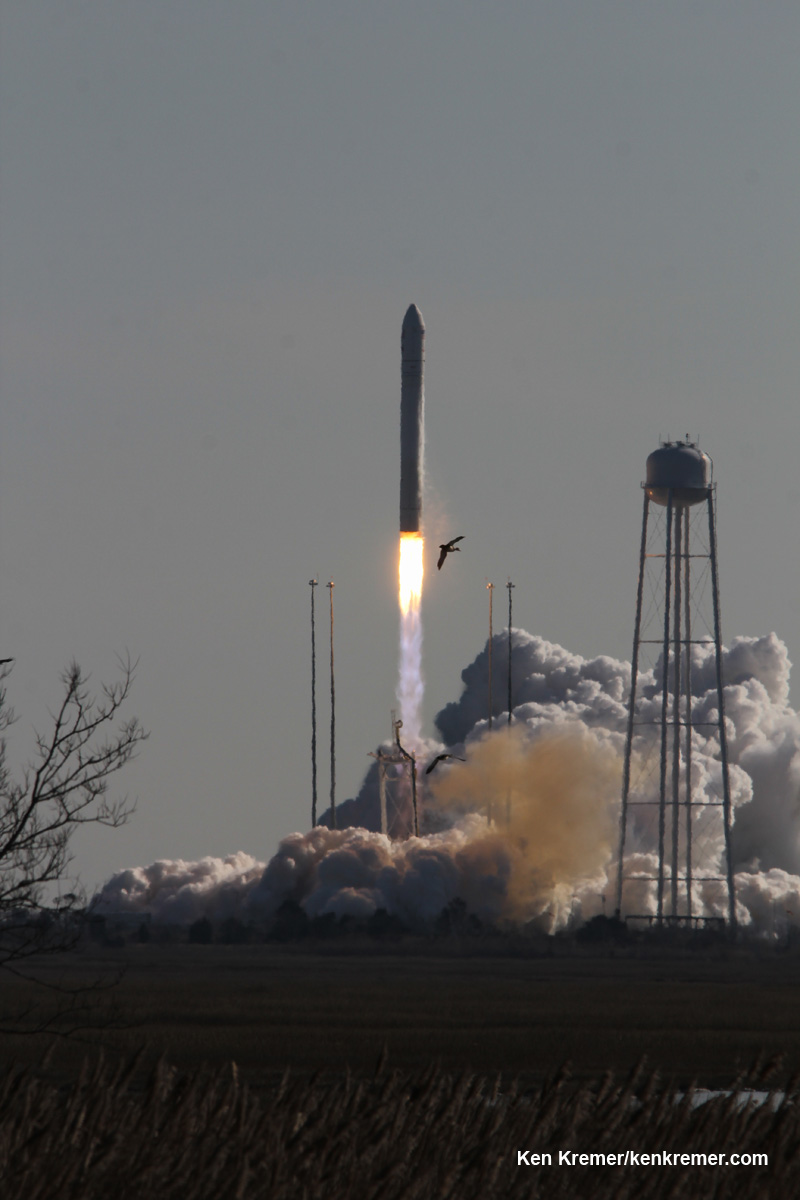
Ken Kremer of Universe Today was at the launch of Orb-1 on January 9, and interviewed SSEP student researchers in attendance at the Wallops Visitor Center, site of the SSEP Press Briefing. Ken took this shot of the launch. Read Ken’s article on the launch that includes SSEP. CLICK FOR ZOOM
Now that 8,000 students across the 19 SSEP Mission 6 communities are fully immersed in microgravity experiment design, we thought that a re-post of the interview below would be helpful to reinforce an understanding of how to think about microgravity experiment design, and how the Student Spaceflight Experiments Program (SSEP) operates. It should also give students a sense that they are now very much a part of America’s and Canada’s Space Program. Please share with all Mission 6 student teams as you see fit.
This interview was aired on NASA TV on January 9, 2014, during the launch of Orb-1 out of the Mid-Atlantic Regional Spaceport (MARS), Wallops Island, VA. Aboard the Cygnus spacecraft were the 23 SSEP experiments comprising the Mission 3b Falcon II payload and Mission 4 Orion payload.
The Student Spaceflight Experiments Program (SSEP) is a program of the National Center for Earth and Space Science Education (NCESSE) in the U.S., and the Arthur C. Clarke Institute for Space Education internationally. It is enabled through a strategic partnership with NanoRacks LLC, working with NASA under a Space Act Agreement as part of the utilization of the International Space Station as a National Laboratory. SSEP is the first pre-college STEM education program that is both a U.S. national initiative and implemented as an on-orbit commercial space venture.
The Smithsonian National Air and Space Museum, Center for the Advancement of Science in Space (CASIS), and Subaru of America, Inc., are National Partners on the Student Spaceflight Experiments Program.




